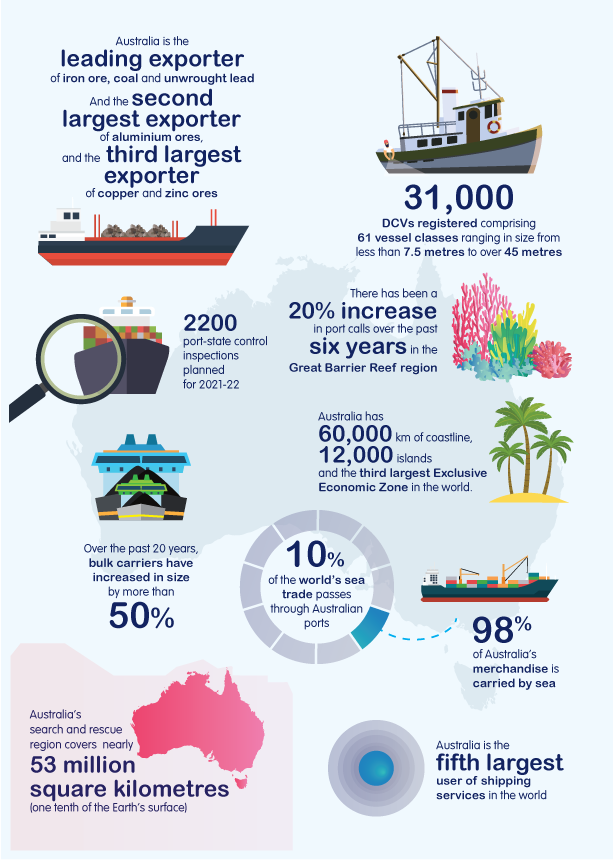With over 99 per cent of Australia’s international trade carried by sea, Australia has one of the largest shipping tasks in the world. We receive more than 29,000 visits per year from international trading ships, are the world’s largest bulk commodities exporter, and our ports handle over 1.6 billion tonnes of cargo annually.
At a national level, Australia’s domestic commercial fleet is made up of around 31,000 vessels comprising 61 vessel classes that range in size from less than 7.5 metres to over 45 metres. These vessels operate across a diverse range of industry sectors, from hire and drive vessels such as kayaks, to barges and passenger ferries, as well as fishing vessels that range from small dinghies right up to large trawlers. This tremendous diversity accounts for the disparate safety cultures and divergent attitudes towards regulation across a broad and ageing fleet.
Domestic and international ships plying Australian waters operate in an environment that is home to some of the world’s most ecologically sensitive sea areas. AMSA has a duty to protect these sensitive marine ecosystems from ship sourced pollution through strong effective regulation and compliance, driven by international conventions. We also play a key role in the maintenance of a national, integrated government and industry framework that is capable of effective responses to pollution incidents in the marine environment.
In addition, AMSA is Australia’s search and rescue (SAR) authority. Our operations cover approximately 53 million square kilometres, or 10 per cent of the Earth’s surface, extending into the Indian, Pacific and Southern Oceans. Given the breadth of AMSA’s remit, the efficacy of our SAR operations relies heavily on strong and effective cooperation with all Australian jurisdictions.
Australia’s coastline extends across 60,000 kilometres, includes 12,000 islands, and our nation occupies the third largest exclusive economic zone in the world. To ensure that all vessels can safely operate as they travel through these expansive waters, AMSA maintains a network of approximately 480 lighthouses and other aids to navigation.
The diversity and wide span of AMSA’s operations mean that our operating and regulatory environment is highly complex and constantly evolving. We need to be increasingly ready for change, whether due to the effects of climate change, the ramifications of new technologies in the maritime industry and within governments, or due to any of the many other drivers of change affecting our operating environment.
For topical issues, see the Chair’s Foreword.
For a detailed view of AMSA’s future operating environment see Looking Ahead
AMSA's operating environment
